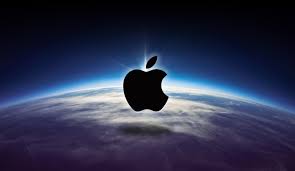Apple and Samsung’s Pricey Phone Strategies Run Head On Into Reality

In recent years, Apple and Samsung have both raised prices on their high-end phones. These days, their devices can cost more than monthly rent in many large U.S. cities.
Last year’s Apple iPhone XS Max tops out at almost $ 1,450. Meanwhile, Samsung’s new Galaxy S10+ can cost as much as $ 1,600.
As a result, phone makers are increasingly feeling a consumer backlash. This year, mobile phone sales will drop 9% in the U.S. and in China, market tracker CCS Insight said on Wednesday.
Worldwide, smartphone sales will drop 2% to 1.4 billion devices, the firm predicts. Last year, smartphone sales declined for the first time ever, dropping 2% to 4%, according to various research firm estimates.
“For a long time, it seemed like the big mobile phone-makers could charge as much as they wanted for their latest flagship devices, but it appears they got carried away in 2018,” Marina Koytcheva, CCS’s vice president of forecasting, writes in the report. “The psychological threshold of $ 1,000 seems to have made some consumers re-evaluate whether they really need to replace their phone as quickly as they’ve done in the past.”
Apple and Samsung raised phone prices under the theory that customers wanted fancier screens, more cameras, and other expensive tech features. The companies hoped the bling would entice customers to upgrade their phones more frequently and reverse a decline in average price of the phones they did sell.
While the higher-price strategy may have worked with early adopters, it didn’t with the mass market. And budget-conscious consumers may pose an even greater challenge as new innovations, like phones that can connect to super-fast 5G wireless networks and phones with foldable screens, will likely cost even more than current models.
The limits of the higher-priced phone strategy are likely factoring into Apple more heavily emphasizing subscription services. Last month, the company devoted an entire event to unveiling new services, like Apple New Plus and Apple TV Plus.
Apple hasn’t said anything about what it will charge for this year’s upcoming new phone models. But in China, it recently cut prices on 2018 models in an effort to lift sales.
Investors aren’t quite sure what to make of the transition. Apple’s (aapl) stock price is up 26% since its last earnings report on January 29, when it disclosed a 19% jump in services revenue. The company has stopped reporting how many iPhones it sold but continues to disclose iPhone revenue (it declined 15% in the latest quarter). With the stock trading at just under $ 195 midday on Wednesday, Apple’s shares are still almost 20% below their all-time record of $ 233.47, achieved last fall.
The trend of declining phone sales started in Western Europe, where sales have declined 23% over the past five years. The slowdown has since spread to once fast-growing areas like India, where growth continues, but at a more modest rate. Sales there will rise only 5% this year after a 10% gain in 2018, the report said.
Just a few years ago, it looked like total phone sales, including cheaper feature phones, would easily surpass 2 billion devices a year. Now, Koytcheva says, that looks more like “a distant dream for the industry.”
